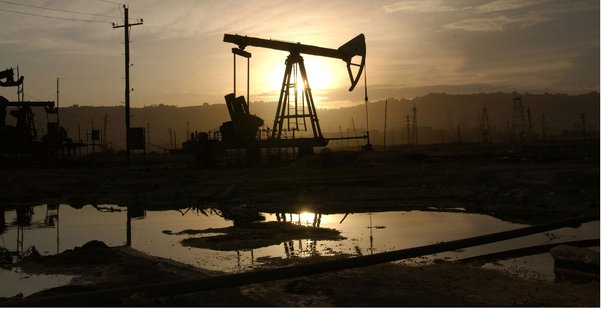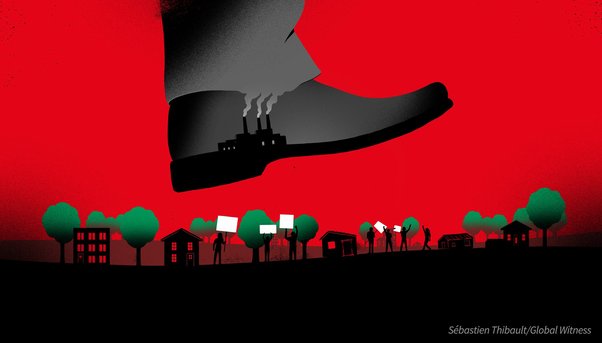Some 880,000 people in COP29 host country Azerbaijan live dangerously close to gas flaring pollution, new Global Witness analysis indicates
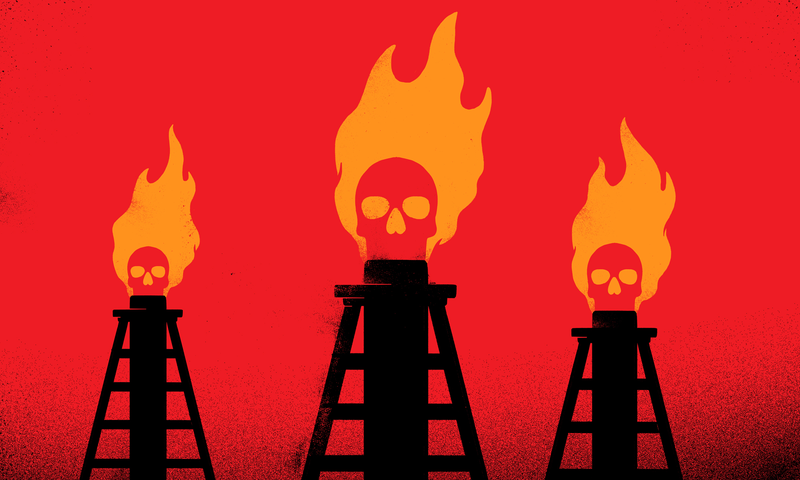
Air pollution emitted by gas flaring is linked to multiple health impacts, including heart disease, stroke and heart failure. Sébastien Thibault / Global Witness
Some 880,000 people in COP29 host Azerbaijan live within 5km of a gas flaring site, according to new Global Witness analysis.
This means that more than one in every 12 Azeri is likely exposed to powerful pollutants from flaring associated with serious medical problems, including asthma, preterm birth and cancer.
This analysis is higher than previously reported estimates of the Azerbaijani population exposed to flaring pollution and suggests a potential health crisis of human making, driven by unchecked fossil fuel production, even as the climate crisis accelerates.
Fossil gas flaring on the rise in Azerbaijan
As COP29 host, Azerbaijan should be setting an ambitious example of taking steps to wind down oil and gas extraction and quickly transition its economy off fossil fuels.
Instead, the Caspian petrostate has doubled down on its gas production and weakened its national climate target.
Fossil gas is produced during oil extraction. This gas could be used for energy, but for various reasons, including expediency, it is sometimes simply burned, or flared.
Flaring gas converts much of the methane in that waste gas to carbon dioxide.
While this releases less powerful emissions on a pound-for-pound basis, flaring is nevertheless a serious and growing climate problem. The World Bank calculates that in 2023, flaring produced more emissions than the UK did.
Since 2018, oil and gas producers in Azerbaijan have increased flaring overall by 10.5%.
This summer, Azerbaijan’s Deputy Energy Minister and the Chief Executive of COP29 said that continued oil and gas extraction is compatible with the Paris Agreement goal of limiting global heating to 1.5°C. (Scientists say it is not.)
Eight active flaring sites now blaze in Azerbaijan’s countryside.
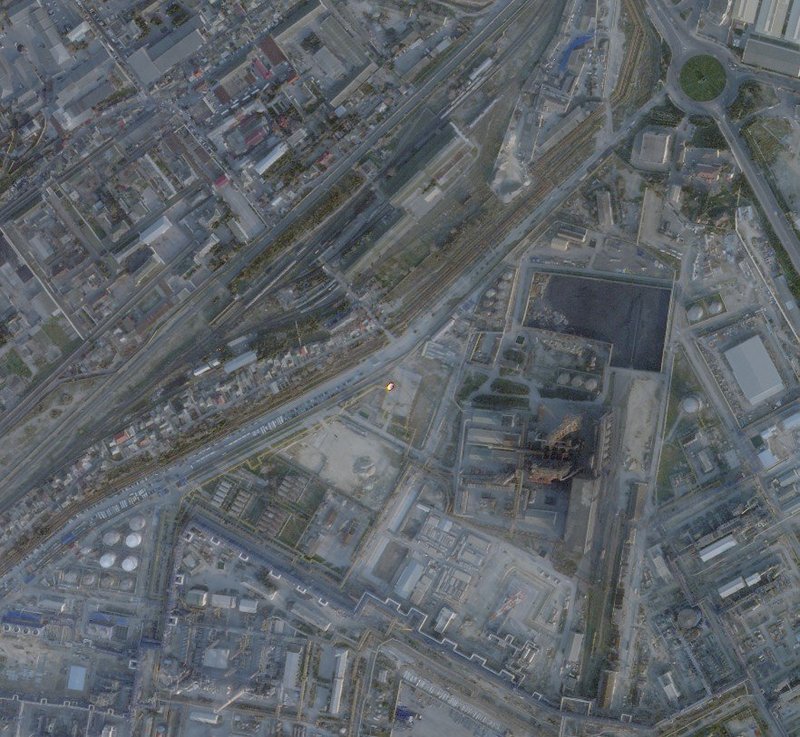
An orange flare is visible from space in this image of Azerbaijan. © 2024 Planet Labs PBC
Global Witness analysis indicates that flaring may pose a serious threat to Azerbaijani public health.
By overlaying Global Human Settlement Layer population maps with flaring site locations, we estimate that some 880,000 people live within 5km of these active flaring sites.
For this analysis, we follow studies by Clean Air Task Force, the Apaguen los Mecheros campaign and RMI to assume communities living within at least 5km from a flare are at risk.
This may be a conservative estimate: research has shown that air pollution from flaring increases emergency respiratory problems for people living as far as 97km (60 miles) downwind of the flare.
Some 2.2 million people – about a fifth of Azerbaijan’s population – live within 10km of flaring.
Cancer, heart failure and strokes
Gas flaring is a major source of air pollution with significant health impacts.
As well as emitting carbon dioxide and methane, flaring releases pollutants including benzene, volatile organic compounds and tiny particles (PM 2.5) that can be absorbed into people’s lungs and bloodstreams.
Numerous studies have revealed links between exposure to flaring pollution and disease.
In the US, researchers have found that flaring and venting fossil gas kills hundreds of people and worsens tens of thousands of asthma cases in children every year.
In the Niger Delta, where about 2 million people live within 4km of a flare, World Bank researchers demonstrated a strong positive association between flaring and children under five developing fever and respiratory illness.
A 2020 study in Texas found that Hispanic women living within 5km of a high number of nightly flares from unconventional shale oil and gas development were 50% more likely to give birth prematurely.
Benzene and other compounds emitted from flaring are known to cause cancer.
Ali Julood, a 21-year-old from a village inside the Rumaila oilfield in Iraq, died of leukemia in 2023.
His family alleges that regular flaring at the field caused the cancer, and is suing BP, the main site contractor, for its alleged flaring practices.
BP has argued it is not the field’s operator and that it is working to support less flaring at Rumaila.
Flaring and Azerbaijani public health
It appears that no publicly available studies have yet linked Azerbaijani public health outcomes with flaring.
But the health risks presented by flaring pollutants – set against the hundreds of thousands of people living in close proximity to flares – are reason for concern.
Fine particulate matter pollution (PM 2.5) is one such product of flaring. Considered the most lethal type of air pollution, PM 2.5 is associated with heart disease, stroke and heart failure.
Inhaling PM 2.5 can make it harder for the heart to pump blood and even damage the electrical system of the heart.
Heart disease and stroke are the leading causes of death in Azerbaijan, according to the World Health Organisation (WHO).
In 2023, the WHO attributed more than one in five deaths from heart disease and stroke in Azerbaijan to air pollution.
There are other sources of air pollution in Azerbaijan, including traffic and wind-borne dust.
But of eight terrestrial flaring sites in Azerbaijan, five lie on or near the Absheron Peninsula, home to Baku and the country’s most densely populated area.
One of these sites is the Sangachal terminal operated by BP.
According to Global Witness analysis, between January 2019-May 2024, Sangachal has flared over 174 million cubic metres of gas.
Over 7,000 people live within 5km of the terminal.
Reporting by Crude Accountability and the Organized Crime and Corruption Reporting Project has documented numerous health complaints from villagers living near Sangachal, including cancer and heart problems, that they attributed to flaring.
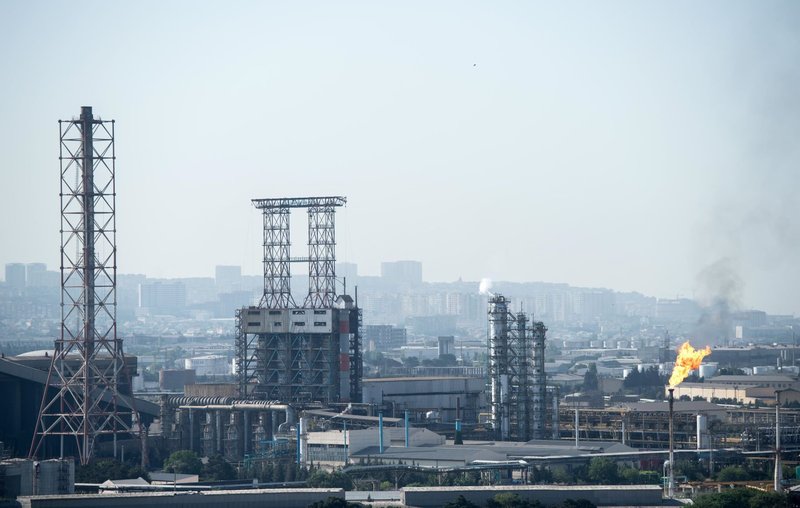
Pollution hovers over an industrial area of Baku, Azerbaijan. Air pollution accounts for one in five deaths from heart disease and stroke in Azerbaijan. Bernd Thissen / dpa / Alamy
In response to these findings, a BP spokesperson reiterated comments the company previously provided to Global Witness:
“BP reports each year total hydrocarbons flared from our upstream operations globally. Over the past decade (2013-2023), the amount flared fell by almost 60%, and by almost 40% from 2019 to 2023.
“BP remains on track to achieve zero routine flaring by 2030, in line with both the World Bank’s Zero Routine Flaring Initiative and the Oil and Gas Decarbonization Charter, to which we are signatories.
"The amount flared, both overall and at any given asset, can vary from year to year. At a particular asset, this can be due to factors such as a significant maintenance programme or an unexpected outage.
“BP businesses have been operating in the Caspian Sea region for more than 30 years. They currently hold interests in, and operate to applicable regulations, a number of assets – including the ACG field and Sangachal terminal.
"The operator of the Sangachal terminal monitors air quality around the terminal on a quarterly basis. Despite the highly industrialised nature of the area, over the period you reference (from 2019), this monitoring has not identified any exceedances of applicable air quality environmental standards.
“BP is committed to respecting and working with communities where we operate.
"At Sangachal there are long-standing community engagement programmes, including procedures to maintain dialogue and enable community concerns to be raised and responded to.
"Over the past five years, air quality or health-related concerns have not been raised through the channels made available to community members.”
Methodology: Mapping flaring pollution exposure in Azerbaijan
We used flaring data from the Visible Infrared Imaging Radiometer Suite (VIIRS) Nightfire dataset provided by the Earth Observation Group (EOG) at the Colorado School of Mines. This dataset includes the location, flaring frequency, and flare volume of global gas flaring sites.
We overlaid this VIIRS Nightfire data for Azerbaijan flaring sites with the Global Human Settlement Layer (GHSL) of the country’s 2020 population, at 100 metre resolution. GHSL maps are produced by the Copernicus component of the European Union’s space programme.
Previous analysis of the Azerbaijani population exposed to flaring pollution, which produced lower estimates, used a coarser scale version of the same GHSL data.
Eight other flaring sites lie offshore Baku in the Caspian Sea. We excluded these sites from our analysis and did not analyse the population living at distances greater than 10km from flaring sites.
Our estimate of the population exposed to flaring pollution is therefore likely conservative, as research has documented health impacts up to 97km (60 miles) downwind of flaring.

